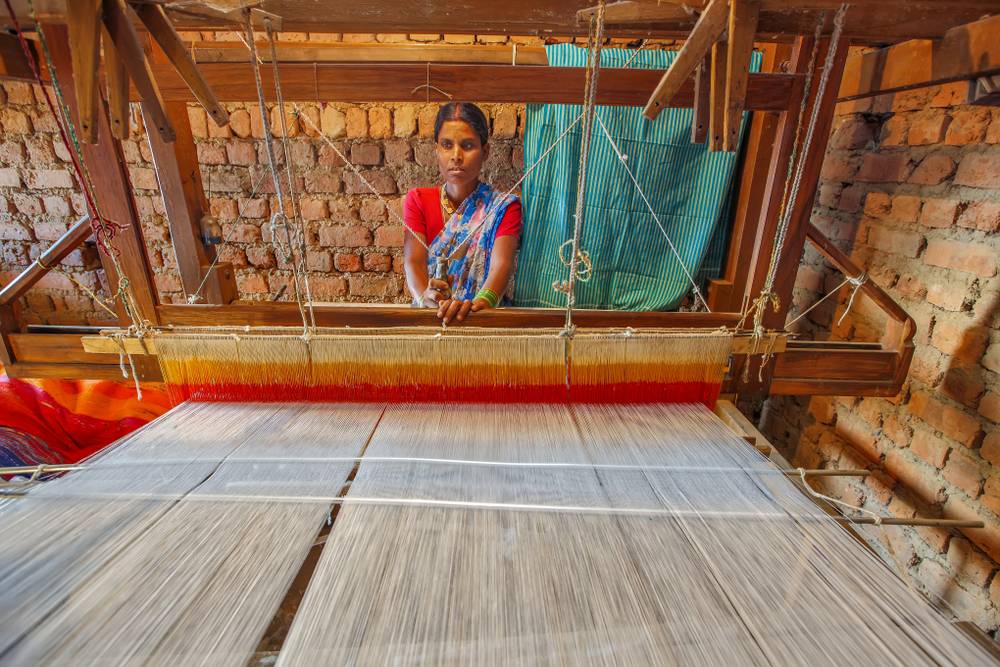 Last updated: May 1st, 2019 12:34 AM
Last updated: May 1st, 2019 12:34 AM
National Rural Livelihood Mission (NRLM)
The Gross Domestic Product (GDP) in India has been on a steady rise. However, it does not come as a surprise that a large rural population of the country continues to live below the poverty line. Various studies indicate that the rate of rural poverty keeps varying at different levels. Even as many schemes and subsidies have been formulated to eliminate rural poverty, it continues to be a significant challenge to the Indian Government. The Ministry of Rural Development initiated the National Rural Livelihood Mission (NRLM) to address the challenges of the poverty faced by the rural population in India.The Mission
The Deendayal Antyodaya Yojana - National Rural Livelihood Mission, or commonly known as the National Rural Livelihood Mission (NRLM), is a centrally sponsored scheme that the Central and the State Governments offer funds together for its implementation. However, the responsibility of the implementation of the Mission lies with the State Rural Livelihood Missions. A District Mission Management Unit, along with the District Administration, is responsible for the planning and the implementation of the Mission at the district level. At the block level, the Mission is executed by the Block Mission Management Unit. The Mission consists of four essential components:- Social Mobilisation, Community Institution and Capacity Building
- Financial Inclusion
- Livelihood Promotion
- Convergence
Objectives of the Mission
The primary objective of the National Rural Livelihood Mission (NRLM) is to provide sustainable livelihoods for the rural poor that they may come out of poverty. The Mission aims to offer the following to the rural poor:- Offer access to formal credit.
- Offer support for the diversification and the strengthening of rural livelihoods.
- Offer access to public services and entitlements.
Key Features of the Mission
The following are the features and components of the Mission.- Self Help Groups would be formed at every level including villages in order to offer a voice, space and the resources to decrease their dependence on external agencies.
- A member from every poor rural household would be involved in the Self Help Group (SHG) network. This individual would most preferably be a woman. Bank-linkage arrangements would be made in Women SHG Group.
- In order to rank all the households in terms of vulnerability, a participatory social assessment would be conducted to identify these households. The ranking would be based on various elements such as single women, women-headed families, poorest of the poor, disabled, landless and migrant labourers and would be given particular focus.
- The Mission aims to support the development of skills, placement, training, innovations, market support, infrastructure creation and self-employment through the Rural Self Employment Institutes (RSETIs) of the rural youth.
- Offering training and capacity building in terms of managing institutions, livelihoods, credit absorption and creditworthiness of the rural poor.
- To provide a Revolving Fund in order to support Self Help Groups, and to strengthen their financial and institutional management capacity and build a strong credit history.
- Introducing the loaning from banks, association and coordination with financial institutions along with economic inclusion model, and coverage from loss of life, health and more.
- The Community Investment Support Fund (CIF) would be offered in intensive block to Self Help Groups through the Federations in order to advance loans or undertake collective socio-economic activities.
- To converge with various departments of Government and other agencies dealing with poverty reduction of the rural poor.
- To offer interest subvention on loans availed by Self Help Groups to cover the difference between the bank's lending rate and 7 per cent.
- National Rural Livelihood Mission will have suitable linkages at the district level with the District Rural Development Agencies/ DRDAs and the Panchayat Raj Institutions/ PRIs.
- The Mission would follow a highly decentralised planning method.
- Therefore, the States will have the liberty to develop their own action plan for bringing down poverty.
Funding Mechanism
The National Rural Livelihood Mission is a scheme that is centrally sponsored where the finances of the programme are split in the ratio of 75:25 between the Central and the State Government. The rate of 90:10 between the Central Government and the State Government will be followed for the States mentioned below.- Arunachal Pradesh
- Assam
- Meghalaya
- Manipur
- Mizoram
- Sikkim
- Nagaland
- Tripura
- Himachal Pradesh
- Jammu and Kashmir
- Uttarakhand
- The State Government has to disclose its share during the previous year.
- The utilisation of 60% of funds available with the State including the opening balance.
- The opening balance should not exceed the threshold of 15% of the allocation for the same year. If so, the Central Government's share would be appropriately decreased.
- The Audit Report and the Utilisation Certificate of the previous year must be submitted to the Central Government.
Services and Beneficiaries
The beneficiaries of the National Rural Livelihood Mission are the rural poor. Instead of merely offering financial support, the Mission aims to provide the rural population with organised institutions and help them make their own institutions. Additionally, the Mission helps the rural poor to acquire sufficient capacity building and offers handholding support along with access to institutional credit. This would help them pursue their livelihoods based on their skills, resources and preferences.Popular Post

In the digital age, the convenience of accessing important documents online has become a necessity...

The Atalji Janasnehi Kendra Project that has been launched by the Government of Karnataka...

The Indian Divorce Act governs divorce among the Christian couples in India. Divorce...

When an individual has more than a single PAN card, it may lead to that person being heavily penalised, or worse,...

Employees Provident Fund (PF) is social security and savings scheme for employee in India. Employers engaged...


